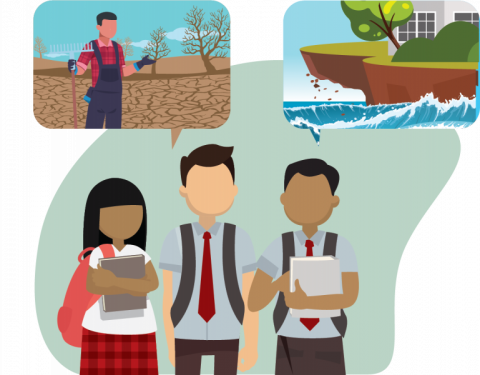
NZCER has been researching climate change and education for several years. This work felt urgent when we started, and it feels even more urgent today as communities – and many schools – deal with the impacts of recent extreme weather events.
The word “unprecedented” has been used a lot to describe these events. First, widespread and deadly flooding in Auckland in January, after the city’s single wettest day and wettest month on record. Then just two weeks later, Cyclone Gabrielle causing chaos and devastation across the North Island, most severely on the East coast. Lives have been lost, and thousands have been impacted by the destruction of homes, bridges and roads, power and communications, crops, and more.
“Resilience” is another word being used. Some of the worst-affected areas from the Cyclone are small, rural, and isolated. Communities like these know how to pull together and do what needs doing. Resilience practically comes with the territory. But this isn’t the first time that small communities, such as Tolaga Bay and Tokomaru Bay have been hit by massively destructive flooding, and chances are, it won’t be the last. You can hear the fatigue and frustration. Resilience can wear thin.
Schools, of course, have been right in the thick of it. Principals and Boards in several regions have had to make decisions about whether to open or close and communicate this to their communities. Schools often play a role in civil defence responses. In hard-hit places like Te Karaka, schools become a temporary home for people whose homes are uninhabitable.
Schools and other learning settings will inevitably end up carrying some of the social, economic, and emotional impacts of climate change for communities. As we saw with COVID, the Christchurch earthquakes, and other crises, getting schools back up and running is a big part of getting “back to normal” after a disruptive crisis. Professor Carol Mutch argues that schools need more recognition and resources for their roles in the aftermath of increasingly common major disasters.
I agree. I’ve argued for the education sector to have a much stronger role and voice in shaping our climate-changed future. This goes beyond just how to plan, respond, and recover when crisis hits. As a country, and as a global community, we’re facing two huge and urgent transitions that need to be managed simultaneously:
-
Emissions reduction: We need to transition to a low-emissions economy and society in order to reduce the speed and extent of global temperature rise.
-
Adaptation: We need to transition to an Aotearoa that can cope with the effects of the global warming that is already “locked in” due to existing emissions.
There are high level national plans for each of these transitions (for example, the National Adaptation Plan discussed here, and the Emissions Reduction Plan here), but they are still very new, and they are very incomplete. As an education sector, we need to engage in the rollout of these climate policies. Both transitions will require changing our mindsets, expectations, and behaviours in a myriad of ways. Education should be central to this process.
We also need to ensure these transitions are socially just and equitable. This is a huge challenge. Education, like every other sector, is still trying to overcome historical and current inequities and injustices. Climate change is an amplifier of these existing inequities and injustices, so we can’t afford not to take action now.
So what are we, as a sector, doing to ensure that we are at the leading edge of the climate transition? What support and direction do we need to be effective learning leaders in these unprecedented times?
Drawing on our research, we have a lot to say about this. In the last few years NZCER has published five research briefings to support climate-conscious conversations in schools, like this one on Leadership and school-wide climate responses.
We’ll be publishing more research this year. We want to encourage conversations about how education can help learners and communities to envision and create a future in which we, and the rest of nature, can flourish. We’ll also identify ways the education sector – including young people and communities – can get more involved in the next stages of emissions reduction and national adaptation planning.
Watch this space.





Add new comment